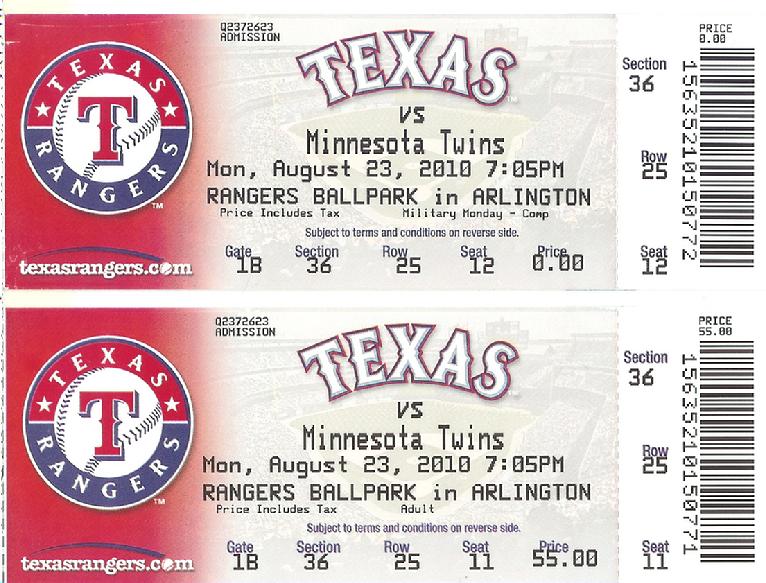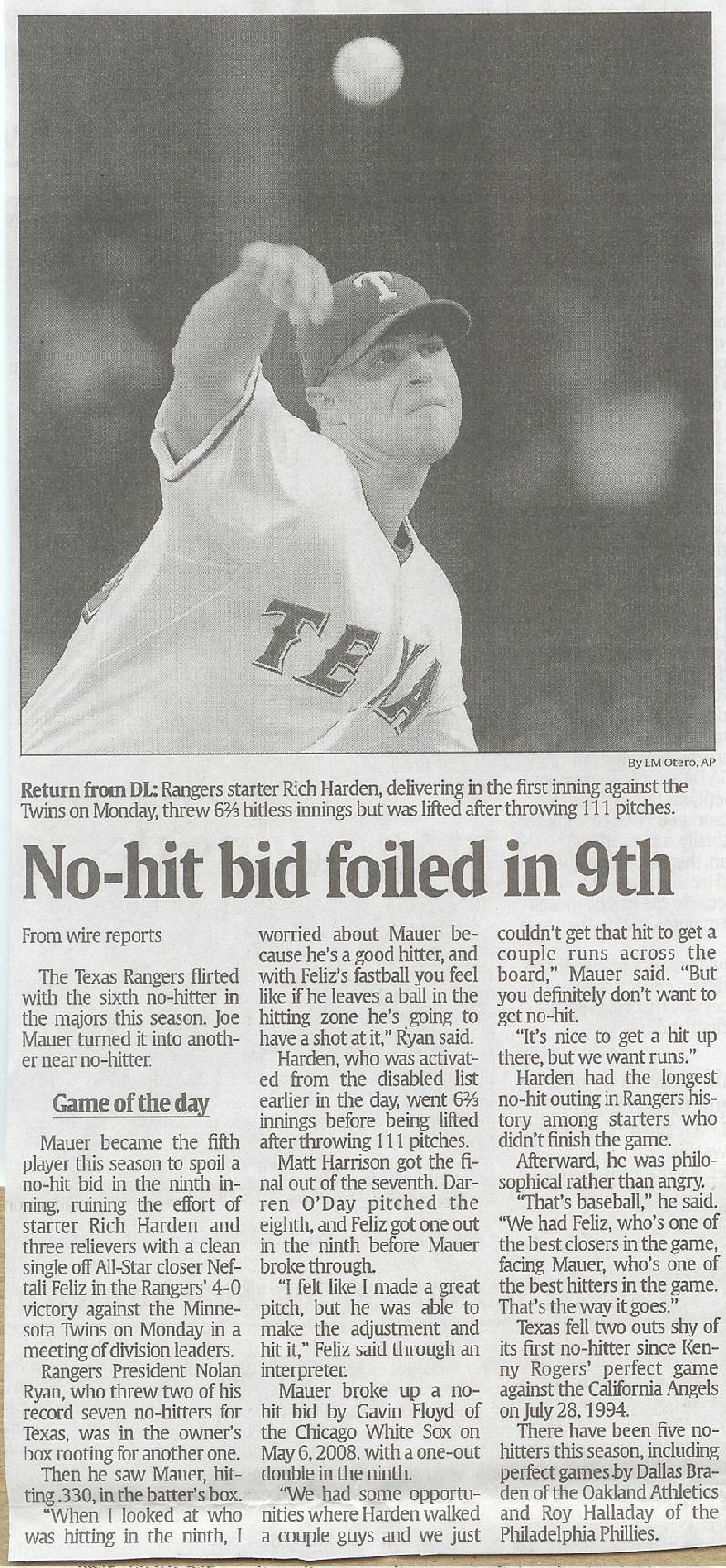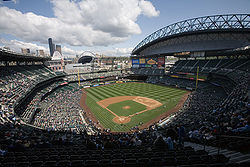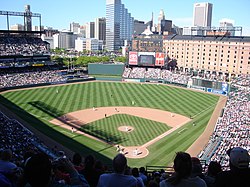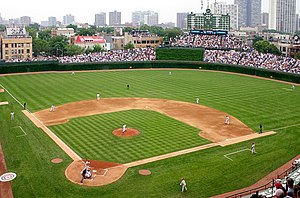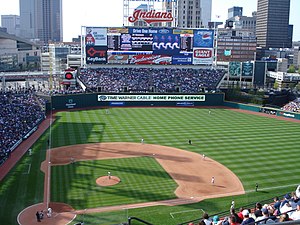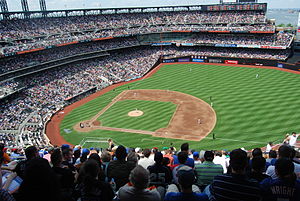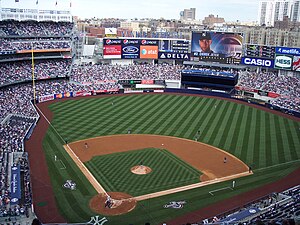Important Message
This Website Terms and Condition of Use Agreement
also known as a 'terms of service agreement'
Will be at the bottom of most web pages!
Please read it before using this website.
Thank You
|
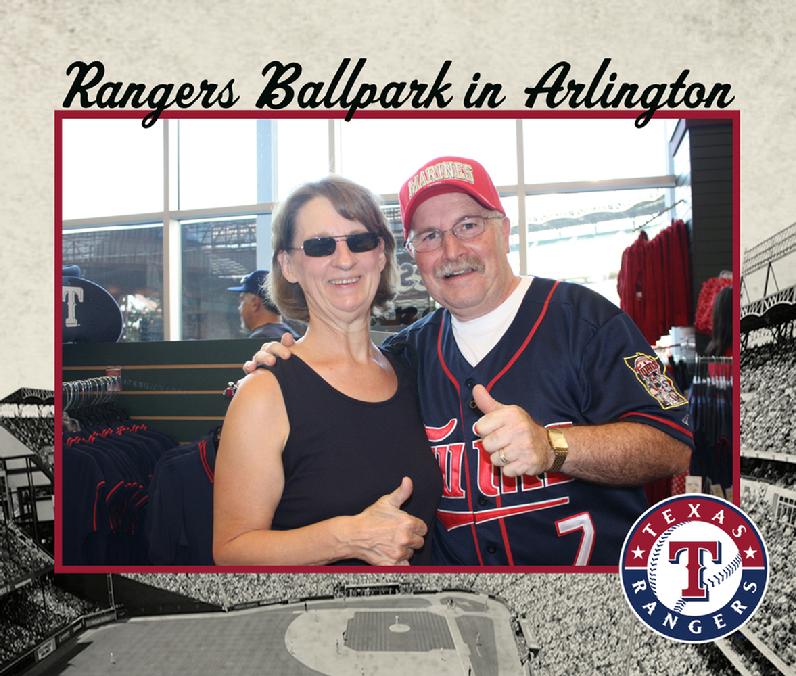 |
| MLB’s Newest Ballpark Is A Shift Away From Retro-Era Stadiums |
|
|
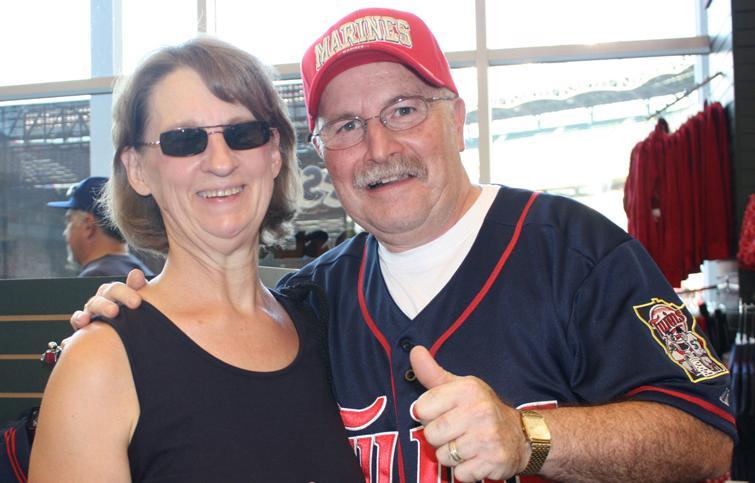 |
| The Rangers are going to the World Series. |
|
|
 |
| Texas Rangers (New updates) |
|
|
|
Rangers headed to World Series for first time
October 22nd, 2010
|
Texas Rangers celebrate after defeating the New York Yankees 6-1 in Game Six of the ALCS during the 2010 MLB Playoffs at Rangers Ballpark in Arlington on October 22, 2010...
|
Due to a Images Notice June 20th, 2022 all photos was removed immediately. Thanks for the Letter.
|
Click a photo to link to a page on our website. Links are found on nearly all Web pages.
Links allow users to click their way from page to page. You will find thousands of links on this website.
|
 |
| MLB Ballparks, From Oldest to Newest |
|
|
Feliz curveball buckles A-Rod, sends Rangers to World Series in 2010
|
 |
| Texas Rangers Neftali Feliz |
|
|
 |
| The San Francisco Giants vs The Texas Rangers 2010 |
|
| |
Exhibit Z - 6PEEMQ
This photo was also on new to this website 2010 a link to this webpage. This webpage Baseball Parks is a informational webpage with no profits or gain.
|
|
|
 |
| List of current Major League Baseball stadiums |
|
|
 |
| October 22nd, 2010 Texas Rangers relief pitcher Neftail Feliz celebrating after striking out New Yotk Yankees' Alex Rodrguez. Exhibit Z - 6PEEMQ - This photo was also on new to this website 2010 a link to this webpage. This webpage Baseball Parks is a informational webpage with no profits or gain. |
|
|
 |
| Which visiting players have hit the most home runs in each ballpark? |
|
|
 |
| Ballpark |
|
|
 |
| Derek Jeter Has 2,734 Games Played and 3,450 Hits. Swings? Here’s a Ballpark Guess. |
|
|
|
|
| Exhibit X - 6PEEMQ
This webpage Baseball Parks is a informational webpage with no profits or gain.
|
 |
| Cody Ross #13 - MVP (Click Here for YouTube Video) |
|
|
 |
| Freddy Sanchez #21, Juan Uribe #5 and Edgar Renteria #16 |
|
|
 |
| Union responds to MLB: ‘Players want to play’ |
|
|
 |
| Ranking all 30 MLB ballparks |
|
|
 |
| You can play at 'Field of Dreams' in The Show |
|
|
 |
| Best Cities to Watch a Baseball Game |
|
|
 |
| Is Globe Life Field too big or is the Rangers' imagination too small? |
|
|
 |
| What Happens When Pitchers and Catchers Don’t Report? |
|
|
Exhibit F - 6PEEMQ
Due to a Images Notice June 20th, 2022 This photo was removed immediately from this webpage. This webpage Baseball Parks is a informational webpage with no profits or gain. Thanks for the Letter.
|
|
|
 |
| Uecker shares old Hawk story! |
|
|
 |
| Target Field - Minnesota Twins |
|
|
 |
| New faces in new places: Stars making ballpark debuts in '23 |
|
|
Due to a Images Notice June 20th, 2022 This photo was removed immediately from this webpage.
|
2010 World Series
|
|
Official 2010 World Series logo
|
| Team (Wins) |
Manager |
Season |
| San Francisco Giants (4) |
Bruce Bochy |
92–70, GA: 2 |
| Texas Rangers (1) |
Ron Washington |
90–72, GA: 9 |
|
| Dates: |
October 27–November 4 |
| Television: |
Fox |
| TV announcers: |
Joe Buck and Tim McCarver |
| Radio: |
ESPN |
| Radio announcers: |
Jon Miller and Joe Morgan |
| Umpires: |
John Hirschbeck (crew chief), Sam Holbrook, Bill Miller, Gary Darling, Mike Winters, Jeff Kellogg |
| ALCS: |
Texas Rangers over New York Yankees (4–2) |
| NLCS: |
San Francisco Giants over Philadelphia Phillies (4–2) |
|
Rangers in 2011 |
|
The 2010 World Series will be the 106th edition of Major League Baseball's championship series. The best-of-seven playoff will be played between the American League champion Texas Rangers and the National League champion San Francisco Giants, and is tentatively set to begin on Wednesday, October 27. Unless the series is a sweep and there are no weather delays, the series will go into November for the second year in a row, but just the third time ever. The latest possible ending of the series is scheduled for November 4, barring weather delays. In their respective league championship series, the Rangers and Giants eliminated the 2009 World Series teams, the New York Yankees and the Philadelphia Phillies, to advance. Interestingly, the Rangers and Giants met in Major League Baseball's first regular season interleague game on June 12, 1997.
The Rangers' advancement marks the first time that the franchise has appeared in the World Series in its 50 year history; its 90–72 regular season record was the lowest among playoff participants. The Giants' victory over the Phillies gave them their fourth World Series appearance ever since relocating to San Francisco before the 1958 season; their most recent appearance was in the 2002 World Series, when they lost to the Anaheim Angels in seven games.
The National League will have home field advantage in the World Series for the first time since 2001, as the NL won the All-Star Game 3–1 on July 13.
|
Click a photo to link to a page on our website. Links are found on nearly all Web pages.
Links allow users to click their way from page to page. You will find thousands of links on this website...
|
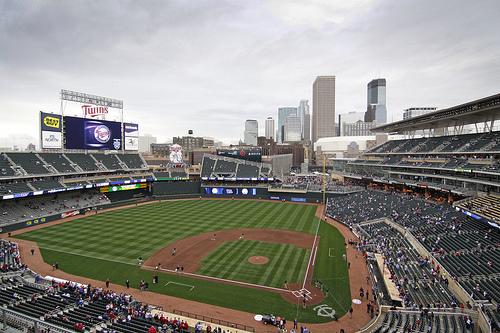 |
| Photos of Target Field |
|
|
When our designers first walked the Target Field site, located in the historic warehouse district of downtown Minneapolis, it made them think differently about the potential for ballpark design. It would take a leap of faith by the design team and the Minnesota Twins to squeeze every element of a 40,000-seat ballpark onto an eight-acre site – one smaller than 95 percent of existing big league ballparks.
|
History of Baseball park
From Wikipedia, the free encyclopedia
A baseball park, also known as a baseball stadium, ball park, or ballpark is the venue where baseball is played. It consists of the playing field and the surrounding spectator seating.
While the diamond and the areas denoted by white painted lines adhere to strict rules, the guidelines of the rest of the field are very flexible. This allows ballparks on all levels of baseball, amateur and professional, to have their own character and quirks.
The term "ballpark" is sometimes used ambiguously, sometimes referring to the entire structure, and sometimes just the playing field. A home run which occurs when the player makes it around the bases and home without the ball leaving the playing field is typically called an "inside-the-park" home run, as opposed to a home run hit over the fence. Sometimes a home run over the fence is referred to as going "out of the ballpark", but that phrase is more often used to mean a home run which clears the stands and lands outside the building. The playing field is most often referred to as the "ballfield", although the term is often used interchangeably with "ballpark" when referring to a small local or little-league facility.
General characteristics
Diagram of a baseball infield
The infield is a rigidly structured "diamond" (actually a square) of dirt containing the three bases, home plate, and the pitchers mound. The space between the bases and home is a grass surface, save for the dirt mound in the center. This differs from softball, where the infield is completely dirt.
Two white lines run out from the home plate area, aligning with first and third bases. These are the foul lines or base lines, usually differentiated by referring to them as the first base line or the third base line. If a ball hit by the batter lands outside of the space between these two lines, or rolls out of this space before reaching first or third base, the ball is "foul", meaning it is dead and the play is over. If it lands between the lines, it is "fair". At the end of the lines are two foul poles, allowing the umpires to judge whether a ball that goes out of the playing field is fair or foul. While referred to as "foul poles", they are actually in fair territory, and thus a ball that hits them is a home run.
On either side of home plate are the batter's boxes. This is where the batter stands when at bat. Behind home is the catcher's box, where the catcher and the home plate umpire stand.
Next to first and third base are the two coaches' boxes, where the first and third base coaches guide the baserunners, generally with gestures or shouts. As the baserunner is facing away from the outfield when running from second base to third, they cannot see where the ball is, and they must look to the third base coach on whether to run, stop, or slide. While the coach is supposed to stand within this box, the rule is rarely enforced, although incidents of coaches getting hit with foul balls can cause some to be cautious.
Farther from the infield on either side are the dugouts, where the teams and coaches sit when they're not on the field. They are named such because at the professional levels, this seating is below the level of the playing field so as to not block the view from prime spectator seating locations. In typical amateur parks, the dugouts may be above-ground wooden or CMU structures with seating inside or simply benches behind a chain link fence.
Beyond the infield and between the foul lines is a large grass outfield, generally twice the depth of the infield. The playing field is bordered by fences of varying height. The highest fences are generally those in the outfield, with the lowest fences surrounding the infield. This is due to the fact that any ball that is hit over the outfield fence is a home run. Sometimes, the fence is made higher in certain areas to compensate for a close proximity to the batter.
In professional parks, the field is surrounded by an area roughly 10 feet wide made of dirt or rubberized track surface called a "warning track". Originally used in Yankee Stadium in 1923 as an actual footrace track, it is now present in all professional ballparks. This change in terrain warns a fielder who is watching a ball in the air that the wall is near, avoiding possible injury.
Beyond the outfield fence in any professional park is an area known as the batter's eye. To ensure that the batter can see the white ball, the batter's eye contains no seating, and is of a darker color. This can be anything from a dark wall to a grassy slope.
Seating
Today, in Major League Baseball, a multi-tiered seating area, a grandstand, surrounds the infield. How far this seating extends down the baselines or around the foul poles varies from park to park. In minor league parks, the grandstands are notably smaller, proportional to expected sizes of crowds compared with the majors.
The seating beyond the outfield fence generally differs from the grandstand, although some multi-purpose or Jewel Box parks have the grandstand surround the entire field. This area could contain inexpensive bleacher seats, smaller grandstands, or simply inclined seating.
In local ballparks, typically there are simply a set or two of aluminum bleachers on either side.
Variations
Distinctive from "goal" games such as football and soccer, in which the entire playing area is fixed in size, the infield is the only part of the field which is very rigid. Like its British relative cricket, there is significant amount of flexibility in the shape and size of the rest of the playing area.
In order to prevent "cheap" home runs, ballparks at particular levels of play usually specify a minimum distance from home to the outfield fences. Generally, the higher the skill level, the deeper the minimum dimensions must be. In the major leagues, a rule was passed in 1958 (official rules) that compelled any new fields built after that point to have a minimum distance of 325 feet from home plate to the fences in left and right field, and 400 feet to center. (Rule 1.04, Note(a)). This rule was passed to avoid situations like the Los Angeles Coliseum, which was 251 ft. down the left field line.
Older ballparks, such as Fenway Park, were "grandfathered" in and allowed to keep their original dimensions. Despite this rule, new parks have sometimes received special dispensation to deviate from these rules. For instance, the second Yankee Stadium, built 2009, used the same dimensions as the original Yankee Stadium, which had been grandfathered in.
As there is merely a minimum, and no set distance (with even the minimums not being strictly enforced), there is a great amount of flexibility. These distances vary from park to park, and can even change drastically in the same park. One of the most famous examples is the original Yankee Stadium, whose odd-shaped plot of land caused right field to be over 100 feet shorter than left, although this difference lessened over time. The rectangular Polo Grounds had extremely short distance down the lines, 258 ft. to right and 280 ft. to left. In contrast, the deepest part of center field was nearly 500 ft. from home plate.
The heights of the fences can also change greatly, the most famous example being the 37-foot-high Green Monster in Fenway Park's left field. Such tall fences are often used to stop easy home runs in a section of the ballpark where the distances from home are shorter, or where there is little space between the field and the street beyond. Some in-play scoreboards and high fences reached 50 to 60 feet, whereas a few outfields were even lined with hedges rather than normal fences or walls. The Hubert H. Humphrey Metrodome, when set up for baseball, has a 23-foot right field "fence" which is actually a relatively thin blue plastic sheet covering folded up football seats. It is often called the "Baggie" or "Hefty bag".
Some ballparks have irregularly shaped fences. While some parks may have round swooping fences or rigidly angles fences, some may have a big change in direction or and irregular angle. Some retro parks, such as Rangers Ballpark in Arlington, throw in a sudden and small inward turn (often referred to as a jog) just to give a little quirkiness to the design.
Originally, and mostly in the Jewel Box parks, these variations were the result of the shape of the property on which the park was constructed. If there was a street beyond left field, the distance to the left field fence would be shorter, and if the distance was too short, the fence would be higher. Now, these variations are mostly influence by the specifications and whims of the designers. The retro parks, which try to recapture the feel of the Jewel Box parks, are designed to have these quirks.
Etymology
Baseball was originally played in open fields or public parks. The genesis of modern baseball is conventionally connected with Elysian Fields in Hoboken, New Jersey, a large public park where the businessmen of New York City gathered from time to time to play organized baseball games and cricket matches, starting around the mid-1840s. The name "Field" or "Park" was typically attached to the names of the early ballparks.
With the beginnings of professional baseball, the ballfield became part of a complex including fixed spectator seating areas, and an enclosure to restrict access to paying customers, as with a fairgrounds. The name "Grounds" began to be attached to ballparks, starting with the Union Grounds in 1862. The suffixes "Field" and "Park" were still used, but many professional ballparks were "Grounds". The last surviving major league "Grounds" was the Polo Grounds in New York City, which was razed in 1964.
The term "Stadium" had been used since ancient times, typically for a running track and its seating area. As college football gained in popularity, the smaller college playing fields and/or running tracks (which also frequently had the suffix "Field") gave way to large stadiums, many of them built during the sports "boom" of the 1920s. Major league baseball enjoyed a similar boom. One of the first major league ballparks to be called a "Stadium" was actually the Polo Grounds, which was temporarily renamed Brush Stadium from its reconstruction in 1911 until the death of owner John T. Brush in the 1920s. By then, the most famous baseball "Stadium" of them all had been constructed: Yankee Stadium. From that point until the retro building boom of the 1990s, the suffix "Stadium" was used for almost every new major league ballpark, and was sometimes applied to the old ones, such as Shibe Park, which was renamed Connie Mack Stadium in 1954.
The suffix "Dome" was also used for the indoor stadiums constructed from the 1960s onward. The official names of those arenas also often included the word "Stadium", such as the Houston Astrodome, whose formal name was "Harris County Domed Stadium" in 1965; the Kingdome, whose formal name was "King County Domed Stadium," and the Metrodome, for which the Minneapolis highway signs direct the driver to "Metrodome Stadium". The retro era of the 1990s and early 2000s saw a return to the original arboreal terms, even to the huge domed structures, such as Safeco Field and Miller Park.
There appears to have been no consistency in which suffix to choose, "Field" or "Park". It is apparently a decision based on which suffix "sounds" better for a given ballpark name. For example, Chicago's Wrigley Field had been previously called "Cubs Park." Also Minute Maid Park was once known as "Enron Field". During the classic era, there did seem to be a tendency for more National League sites to be called "Field" and for more American League sites to be called "Park", but this was not totally consistent either.
Settings
Organized baseball has been a popular spectator sport from the beginning[citation needed]. The construction of seating areas to an expected need is complemented with answers to questions about where to put the ballpark and how fans will get to the ballpark.
The earliest ballparks, such as Elysian Fields, were in a location far from the city center. Each game was an event, and fans would make the effort to travel by ferry to watch the game.
With the growth of professional leagues, and consequent growth in the quantity of games, each game became less of an event, and fan convenience became an important factor. Many professional ballparks were built either near the city center or in working-class neighborhoods, based on the expected economic level of the average fan.
Consequently, the classic ballparks typically had little space for automobiles, as it was expected that most fans would take mass transit to the games, a situation that still prevails at Chicago's Wrigley Field, for example. Some early ballparks, such as Brooklyn's Eastern Park, were abandoned because the trolley lines did not go out far enough and the team was not performing well enough for people to tolerate the inconvenience.
As fans became more affluent, and especially as they moved to the suburbs and bought cars, the lack of parking became an important issue. Some ballparks remedied this problem through the construction of parking garages in the vicinity, or building new ballparks with ample parking. Others built ballparks in the suburbs, typically with large parking areas. The ballpark/stadium thus became an "island" in an "ocean" of parking space.
The modern "retro" trend seeks to cover all the bases: an urban location, with plenty of parking and public transportation available.
Types of baseball parks

The Huntington Avenue Grounds during the 1903 World Series. Huntington Avenue Grounds was the first stadium to host a modern World Series game.
The original professional baseball venues were large wooden ballparks with seats mounted on wood platforms. Although known for being constructed out of wood, they did have some iron columns for better support. There was usually one tier of inclined seating, sometimes topped with either a flat roof or, in some instances, a small upper tier. The outfield was bordered by tall walls or fences covered in advertisements, much like today's minor league parks. Sometimes, these advertisements were fronted with bleacher seats, or "bleaching boards". Wood was a short-life but inexpensive material, and there was not necessarily any expectation that professional baseball was going to be a long-term business.
However, the use of wood as the primary material presented a major problem, especially as baseball continued to thrive and the wooden stands aged and dried. Many parks caught fire, and some were leveled completely. This problem, along with the realization that baseball was here to stay, were the major factors that drove the change to the new standard materials for ballparks: steel and concrete. Some famous wooden parks, such as the Polo Grounds III in New York and National League Park in Philadelphia, were decimated by fire and rebuilt in fire-resistant materials (Polo Grounds IV and Baker Bowl). Others were simply abandoned in favor of new structures built elsewhere. These new fire-resistant parks often lasted for many decades, and (retrospectively) came to be known as "Jewel Boxes".
| Ballpark | Location | Team | Opened | Closed | Demo'd | Current Status |
|---|
| American League Park |
Washington, D.C. |
Senators |
1901 |
1911 |
1911 |
Destroyed by fire. Now residential. |
| Bennett Park |
Detroit, Michigan |
Tigers |
1896 |
1911 |
1911 |
Was site of Tiger Stadium which was demolished in September 2009. |
| Columbia Park |
Philadelphia, Pennsylvania |
Athletics |
1901 |
1909 |
1913 |
Now residential. |
| Eastern Park |
Brooklyn, New York City |
Grooms |
1891 |
1897 |
???? |
Now site of a car junkyard. |
| Exposition Park |
Pittsburgh, Pennsylvania |
Pirates |
1890 |
1909 |
1915 |
Once a railroad yard. Now parking for PNC Park. |
| Hilltop Park |
Manhattan, New York City |
Highlanders |
1903 |
1912 |
1914 |
Now site of NewYork-Presbyterian Hospital |
| Huntington Avenue Grounds |
Boston, Massachusetts |
Americans |
1901 |
1911 |
1912 |
Now site of Solomon Court at Cabot Center. |
| Kennard Street Park |
Cleveland, Ohio |
Blues |
1879 |
1884 |
???? |
|
| League Park |
Cleveland, Ohio |
Indians
Spiders |
1891 |
1909 |
1909 |
Now public park centered on original diamond. |
| Lloyd Street Grounds |
Milwaukee, Wisconsin |
Brewers |
1895 |
1903 |
???? |
|
| National League Park |
Cleveland, Ohio |
Blues
Spiders |
1887 |
1890 |
???? |
|
| National League Park |
Philadelphia, Pennsylvania |
Phillies |
1887 |
1894 |
1894 |
Destroyed by fire. Rebuilt as Baker Bowl. Now commercial. |
| Oriole Park I |
Baltimore, Maryland |
Orioles |
1882 |
1889 |
???? |
|
| Oriole Park II |
Baltimore, Maryland |
Orioles |
1890 |
1891 |
???? |
|
| Oriole Park III |
Baltimore, Maryland |
Orioles |
1891 |
1900 |
???? |
|
| Oriole Park IV |
Baltimore, Maryland |
Orioles |
1901 |
1902 |
???? |
|
| Palace of the Fans |
Cincinnati, Ohio |
Reds |
1902 |
1911 |
1911 |
Replaced on site by Crosley Field. Now parking and commercial. |
| Polo Grounds I |
Manhattan, New York City |
Gothams, Metropolitans |
1880 |
1889 |
1889 |
Destroyed by street construction. Now part of West 111th Street. |
| Polo Grounds II |
Manhattan, New York City |
Giants |
1889 |
1891 |
1919? |
Now public housing. |
| Polo Grounds III |
Manhattan, New York City |
Giants |
1890 |
1911 |
1911 |
Destroyed by fire. Rebuilt as Polo Grounds IV. Now public housing. |
| Recreation Park |
Detroit, Michigan |
Wolverines |
1881 |
1888 |
1894 |
Now site of the Detroit Medical Center |
| Robison Field |
St. Louis, Missouri |
Cardinals |
1893 |
1920 |
1926 |
Now site of Beaumont High School |
| South End Grounds |
Boston, Massachusetts |
Beaneaters |
1871 |
1914 |
1914 |
Now parking for Mass Transit station |
| South Side Park |
Chicago, Illinois |
Colts
White Sox |
1893 |
1940 |
1940 |
Now site of the Chicago Housing Authority's Wentworth Gardens |
| Washington Park I |
Brooklyn, New York City |
Grays |
1883 |
1891 |
???? |
|
| Washington Park II |
Brooklyn, New York City |
Superbas |
1898 |
1913 |
???? |
|
| West Side Park I |
Chicago, Illinois |
White Stockings |
1885 |
1891 |
???? |
Now site of the Andrew Jackson Language Academy. |
| West Side Park II |
Chicago, Illinois |
Cubs |
1893 |
1915 |
1915 |
Now site of the University of Illinois College of Medicine Medical Center. |
Jewel Box ballparks
The ballparks built or rebuilt of concrete and steel (albeit with wooden seats) after the days of the wooden ballpark are now known as the Jewel Box ballparks or classic parks. These parks are said by many to embody the golden age of baseball. They are known for their green seats, large roofs, intimate feel, and major use of exposed steel, brick, and stone. The first of these was Shibe Park, which opened in 1909 in Philadelphia. Another Philadelphia ballpark, the Baker Bowl, which opened in 1895, used steel and brick instead of wood as the primary construction materials, and is considered the forerunner of the Jewel Box parks.
Two-tiered grandstands became much more prevalent in this era. These decks were typically held up by steel pillars which obstructed view from some seats in the lower level. However, because of these supports, the upper decks could come very close to the field, giving the ballpark a more intimate feel. Two tiers was the standard for decades, until the New York Yankees built Yankee Stadium. To accommodate the large crowds Babe Ruth would draw, Yankee Stadium was the largest ballpark in baseball, and was built with three tiers. This would become the new standard until some recently built parks reverted to two.
One other characteristic of these parks came about almost by accident. Most of them were built to fit the constraints of actual city blocks, resulting in asymmetrical outfield dimensions. The exceptions were Shibe Park and Comiskey Park, which were built on rectangular city blocks that were large enough to accommodate left/right field symmetry.
Although other sports, such as soccer and football were often played at these sites (the Polo Grounds and Yankee Stadium were purposely designed to accommodate football also), the focus was on baseball. In contrast to the later multi-purpose parks, the seats were generally angled in a configuration suitable for baseball. The "retro" ballparks built in the 1990s and beyond are an attempt to capture the feel of the Jewel Box Parks.
The only Jewel Boxes still in use for major league baseball are Fenway Park and Wrigley Field.
| Ballpark | Location | Team | Opened | Lights installed | Closed | Demo'd | Current Status |
|---|
| Baker Bowl |
Philadelphia, Pennsylvania |
Phillies |
1895 |
Never |
1938 |
1950 |
Now commercial |
| Braves Field |
Boston, Massachusetts |
Braves |
1915 |
1946 |
1952 |
1955 |
Reconfigured into Nickerson Field. |
| Comiskey Park |
Chicago, Illinois |
White Sox |
1910 |
1939 |
1990 |
1991 |
Now parking for U.S. Cellular Field. |
| Crosley Field |
Cincinnati, Ohio |
Reds |
1912 |
1935 |
1970 |
1972 |
Now parking and commercial. |
| Ebbets Field |
Brooklyn, New York City |
Dodgers |
1913 |
1938 |
1958 |
1960 |
Now residential. |
| Fenway Park |
Boston, Massachusetts |
Red Sox
Braves |
1912 |
1946 |
------- |
------- |
Active. |
| Forbes Field |
Pittsburgh, Pennsylvania |
Pirates |
1909 |
1940 |
1970 |
1971 |
Now site of University of Pittsburgh dormitories. |
| Griffith Stadium |
Washington, D.C. |
Senators |
1911 |
1941 |
1961 |
1965 |
Now site of the Howard University Hospital. |
| League Park |
Cleveland, Ohio |
Indians |
1910 |
Never |
1946 |
1951 |
Public park. |
| Polo Grounds IV |
Manhattan, New York City |
Giants
Yankees
Mets |
1912 |
1940 |
1964 |
1964 |
Now public housing. |
| Shibe Park |
Philadelphia, Pennsylvania |
Athletics
Phillies |
1909 |
1939 |
1970 |
1976 |
Now site of the Deliverance Evangelical Church. |
| Sportsman's Park |
St. Louis, Missouri |
Browns
Cardinals |
1902 |
1940 |
1966 |
1966 |
Now site of the Herbert Hoover Boys and Girls Club. |
| Tiger Stadium |
Detroit, Michigan |
Tigers |
1912 |
1948 |
2000 |
2009 |
Partially demolished in 2008. Demolition held up by preservationists, but completed in 2009. |
| Wrigley Field |
Chicago, Illinois |
Cubs |
1914 |
1988 |
------- |
------- |
Active. |
| Yankee Stadium I |
Bronx, New York City |
Yankees |
1923 |
1946 |
2008 |
2010 |
Renovated in 1973-76. Demolished 2009-10 for public parkland. |

Aerial view of Three Rivers Stadium, circa 2000
Main article: Multi-purpose stadium
From the 1960s to the ascension of retro parks in the 1990s, baseball was dominated by multi-purpose ballparks. Also derisively known as "concrete donuts", "cookie-cutters", or "giant ashtrays", they were usually tall and circular or square structures made entirely of, usually bare, reinforced concrete. The parks were built to hold baseball as well as football, soccer, and other sports. Cleveland Stadium, which featured an oval grandstand that was more friendly to goal-centered sports like football, is considered the ancestor to this type of design. A park built to suit all sports well, which was co-owned by the teams or the city, seemed advantageous to all. Some parks that were originally built for one sport were renovated to accommodate multiple sports.
The shape of the parks generally depended on the original use. Baseball parks that were renovated to accommodate football, like Candlestick Park and Anaheim Stadium, were usually of an odd non-geometric state. Football stadiums that were renovated to accommodate baseball, like Sun Life Stadium and Mile High Stadium, were usually of a rectangular shape. Parks that were built to serve both were usually circular and completely enclosed on all sides. These were the parks that gained multi-purpose parks the reputation as bland cookie-cutter structures. The first of these parks was RFK Stadium in the District of Columbia. RFK is unique in that it hosted two different baseball teams, and that it was the first to originally be intended for multiple sports. It is currently in use for only Major League Soccer's D.C. United and the EagleBank Bowl, an annual college football bowl game.
A notable variance among the cookie-cutter stadia was Shea Stadium. One of the first parks designed and built for baseball and football, it did not feature an exterior of bare concrete, but was clad in steel. This steel was later painted blue, making Shea the only multi-purpose park to have an exterior that was not either gray or white. Also, the grandstand only extended just past the foul poles, and did not completely enclose the field. Plans were that the grandstand would be enclosed and a dome built on top, but it was discovered that the structure could not handle it. Thus the stadium simply remained with the area behind the outfield fence open.
One major innovation of the multi-purpose parks was the cantilevered upper deck. In earlier ballparks, the columns used to support the upper decks obstructed the view from some seats in the lower deck. The upper decks were extended upwards and the columns removed. However, even though the extension counterbalanced some of the weight, the upper decks could no longer extend as close to the field and had to be moved back. Also, the roofs could no longer be as large, and often only covered the top 15 or so rows. This exposed fans to the elements.
Besides the drawbacks of the cantilever design, there were other issues with these parks. With few exceptions, seating was angled to face the center of the field of play, rather than home plate. Luxury boxes, which were a part of football culture, were now introduced to baseball, and were usually placed below the upper decks, pushing upper deck seating farther from the field. The capacities of these stadiums were staggeringly large, due to football's smaller schedule drawing a larger crowd per game. Because of this, even crowds of 40,000, a fair amount for baseball, seemed sparse. Often the only times they looked full were on opening day and playoff games. Due to the rectangular shape needed for football or soccer, outfield dimensions were generally symmetrical, and even seats at field level down the lines could be far from the action. Despite being cost-effective, these problems eventually caused the parks to become unfashionable.
In fact, only two of the 14 purely multi-purpose parks are still in use by baseball today: the Oakland Coliseum and Sun Life Stadium. The Marlins are planning on moving out of Sun Life Stadium and into a new baseball-only stadium in 2012.
| Ballpark | Location | Team | Opened | Closed | Demo'd | Current Status |
|---|
| Anaheim Stadium* |
Anaheim, California |
Angels |
1966 |
------- |
------- |
Active. Renovated in 1979-80 and in 1996-98. |
| Atlanta-Fulton County Stadium |
Atlanta, Georgia |
Braves |
1966 |
1996 |
1997 |
Now parking for Turner Field. |
| Busch Memorial Stadium |
St. Louis, Missouri |
Cardinals |
1966 |
2005 |
2005 |
Plaza area for Busch Stadium III. |
| Candlestick Park* |
San Francisco, California |
Giants |
1960 |
------- |
------- |
Active. Renovated in 1971–72. Closed for baseball in 2000. |
| Cleveland Municipal Stadium |
Cleveland, Ohio |
Indians |
1931 |
1995 |
1996 |
Now site of Cleveland Browns Stadium. |
| Canadian National Exhibition Stadium** |
Toronto, Ontario |
Blue Jays |
1959 |
1989 |
1999 |
Now site of BMO Field. |
| Mile High Stadium* |
Denver, Colorado |
Rockies |
1948 |
2001 |
2002 |
Originally a minor-league baseball stadium in 1948. Now parking for Invesco Field at Mile High. |
| Oakland-Alameda County Coliseum |
Oakland, California |
Athletics |
1966 |
------- |
------- |
Active. |
| Qualcomm Stadium** |
San Diego, California |
Padres |
1967 |
------- |
------- |
Active; closed for baseball in 2003. |
| Robert F. Kennedy Memorial Stadium |
Washington, D.C. |
Senators
Nationals |
1961 |
------- |
------- |
Active; closed for baseball in 2007. |
| Riverfront Stadium |
Cincinnati, Ohio |
Reds |
1970 |
2002 |
2002 |
Now Cincinnati Reds Hall of Fame and Museum. |
| Shea Stadium |
Queens, New York City |
Mets
Yankees |
1964 |
2008 |
2009 |
Now parking for Citi Field and the USTA Billie Jean King National Tennis Center. |
| Sun Life Stadium** |
Miami Gardens, Florida |
Marlins |
1987 |
------- |
------- |
Active; Marlins will move to new ballpark in 2012. |
| Three Rivers Stadium |
Pittsburgh, Pennsylvania |
Pirates |
1970 |
2000 |
2001 |
Now parking for Heinz Field and PNC Park. |
| Philadelphia Veterans Stadium |
Philadelphia, Pennsylvania |
Phillies |
1971 |
2003 |
2004 |
Now parking for Citizens Bank Park and the Wachovia Spectrum. |
*A baseball-only ballpark converted to a multi-purpose stadium.
**A football-only stadium converted to a multi-purpose stadium.
Modern ballparks
While most teams turned to multi-purpose parks, some chose to build baseball-only parks. While these modern ballparks shirked some of the conventions of multi-purpose parks, they did include some of the new features. The most notable influences were the cantilevered upper decks, the use of seating colors other than green, and fairly plain concrete exteriors. The most important things, though, were that they had a more intimate feel to them, and they were built for baseball. While the multi-purpose parks have become all but extinct, some modern parks, such as Dodger Stadium and Kauffman Stadium, have been hailed for aging beautifully. Rather than build new parks, the teams have decided instead to renovate the current structures, adding a few newer conveniences. Several of the modern parks built as such have remained in use, with no indication of being demolished.
While Cleveland Stadium is the ancestor to the multi-purpose ballpark, the ancestor of the modern ballpark is Milwaukee County Stadium. It was the first to feature a symmetrical, round outfield fence. It also featured the rounded V-shaped grandstand and colorful seats that are common among all modern parks. Coincidentally, it was also to be one of the earlier examples of a converted park as well. It was supposed to replace a minor league facility, and serve as home of the minor league team until a major league franchise could be lured to the city. However, the Braves came to Milwaukee earlier than expected, and the minor league team never played in the stadium.
The first two truly modern ballparks were built by the two New York teams who moved to California, the Giants and the Dodgers. Candlestick Park was created first, but was converted to a multi-purpose park to accommodate the 49ers. Dodger Stadium has been upgraded a number of times, but remains baseball-only and its original design is still largely intact.
Anaheim Stadium, which was initially modeled closely on Dodger Stadium, was expanded for football as was Candlestick, but once the Rams departed, most of the extra outfield seating was peeled back, returning the structure to more like its original design.
The original Yankee Stadium is an exceptional case. Yankee Stadium was a Jewel Box park, albeit a very large one. It was showing its age in the 70's, and the stadium was extensively renovated during 1973-75, converting it into more of a modern style ballpark. Many of the characteristics that defined it as a classical Jewel Box were also retained, so the remodeled Stadium straddled both categories.
U.S. Cellular Field was the last modern ballpark to be built. A series of renovations have been made to make it appear more like a retro-classic ballpark.
| Ballpark | Location | Team | Opened | Closed | Demo'd | Current Status |
|---|
| Anaheim Stadium |
Anaheim, California |
Angels |
1966 |
------- |
------- |
Active. Renovated in 1979-80 and in 1996-98. |
| Candlestick Park |
San Francisco, California |
Giants |
1960 |
------- |
------- |
Active. Renovated heavily from 1971–72. Closed for baseball in 2000. |
| Dodger Stadium |
Los Angeles, California |
Dodgers
Angels |
1962 |
------- |
------- |
Active |
| Kauffman Stadium |
Kansas City, Missouri |
Royals |
1973 |
------- |
------- |
Active. Renovated heavily from 2007–09. |
| Milwaukee County Stadium |
Milwaukee, Wisconsin |
Braves
Brewers |
1953 |
2000 |
2001 |
Now site of Helfaer Field along with parking for Miller Park. |
| U.S. Cellular Field |
Chicago, Illinois |
White Sox |
1991 |
------- |
------- |
Active. Renovated heavily from 2001-09. |
| Yankee Stadium I |
Bronx, New York City |
Yankees |
1923 |
2008 |
2010 |
Renovated in 1973-76; Demolished 2009-10 for public parkland. |
Temporary and converted ballparks
With the 1960s came the first expansion teams. While some teams expanded in cities where there were established teams with facilities that could be shared, not all were as fortunate. This led to the emergence of two distinct subsets of parks in the major leagues: temporary ballparks and converted ballparks.
In some cases, there are plans to build a new ballpark for the expansion team, but it will not be completed until a few years after the team is established. This may be for a few reasons, such as delays or a desire to hold off until the deal is settled. In this case, an established building is used as a temporary home, often a minor league park. The first temporary ballparks were not actually used by expansion teams but by established franchises. When the Dodgers and Giants moved to California from New York, they played in Los Angeles Memorial Coliseum and Seals Stadium respectively while Dodger Stadium and Candlestick Park were being built.
The other case is when, rather than building a new park, the city renovates an existing minor league or college facility, expanding it to fit a major league team. These converted ballparks are different from football stadia that were converted to facilitate baseball in that converted ballparks were originally built to be baseball only, albeit for a non-major league level. Early converted ballparks were Memorial Stadium in Baltimore, Municipal Stadium in Kansas City, and Metropolitan Stadium in the Minneapolis-St. Paul metro area. All three were expanded minor league facilities, although Baltimore and the Met were constructed with the idea of expanding to major league level in mind. Kansas City was a true established minor league park that was substantially expanded to accommodate major league size crowds.
These two types of ballpark are distinct because of their use, not their design. Because of this, a temporary or converted ballpark can also be any of the other types: Jewel Box, modern, multi-purpose, etc.
| Ballpark | Location | Team | Opened | Closed | Demo'd | Current Status |
|---|
| Arlington Stadium |
Arlington, Texas |
Rangers |
1965 |
1993 |
1994 |
Now parking for Rangers Ballpark in Arlington. |
| Colt Stadium |
Houston, Texas |
Colt .45's |
1962 |
1964 |
1970 |
Dismantled and rebuilt in Mexico as Mexican League park. |
| Jarry Park Stadium |
Montreal, Quebec |
Expos |
1969 |
1976 |
1993 |
Converted to Stade Uniprix, a tennis venue. |
| Kansas City Municipal Stadium |
Kansas City, Missouri |
Athletics
Royals |
1923 |
1972 |
1976 |
Now municipal parking. |
| Los Angeles Memorial Coliseum |
Los Angeles, California |
Dodgers |
1923 |
------- |
------- |
Active; closed for baseball in 1961. |
| Memorial Stadium |
Baltimore, Maryland |
Orioles |
1950 |
1997 |
2001 |
Now residential. |
| Metropolitan Stadium |
Bloomington, Minnesota |
Twins |
1956 |
1981 |
1985 |
Now site of the Mall of America. |
| Milwaukee County Stadium |
Milwaukee, Wisconsin |
Braves
Brewers |
1953 |
2000 |
2001 |
Now site of Helfaer Field along with parking for Miller Park. |
| Seals Stadium |
San Francisco, California |
Giants |
1931 |
1959 |
1959 |
Now a shopping center. |
| Sick's Stadium |
Seattle, Washington |
Pilots |
1938 |
1976 |
1979 |
Now a Lowe's store. |
| Wrigley Field |
Los Angeles, California |
Angels |
1925 |
1965 |
1966 |
Now Gilbert Lindsay Park. |
Indoor ballparks
Although mostly multi-purpose parks, a unique and important type of ballpark is the indoor park. These parks were covered with a fixed roof, usually a hard concrete dome. Reasons to build indoor parks were varied. The Astrodome, the first indoor sports stadium ever built, was built to escape the hot and very humid climate of Houston; the Kingdome was built to escape Seattle's constant rains. There is little to no natural light in these parks necessitating the use of one of the most distinguishing aspects of an indoor park: artificial turf. Since there would not be enough light to grow grass turf had to be installed, and this affected the game. Turf was harder, and thus a ball hit on the ground would move faster and bounce high. This, coupled with the usually dull white or gray roofs that could camouflage a fly ball, caused what Twins fans called a "dome-field advantage".
A park of note is Olympic Stadium in Montreal. The park was designed with a large tower that loomed over top. Cables came down from the top of the tower to connect to the large oval center of the roof. This oval center was supposed to be lifted by the cables, opening the park up if the weather was pleasant. However, the mechanism never worked correctly, and what was supposed to be a retractable roof was initially never used and then later became permanently fixed, making the stadium a strictly indoor facility.
Indoor parks faced many of the same problems of the multi-purpose parks, which was compounded with the added problem of playing an outdoors sport indoors. Thus, indoor parks are also a dying breed. Tropicana Field is the only indoor park left hosting a Major League Baseball team, and may be replaced in the near future.
However, while indoor parks are considered outdated in North America, this is not the case elsewhere. In Japan, half of the Nippon Professional Baseball teams play in domes, with no plans to vacate to a more "appealing" home. The most well-known example is likely the Tokyo Dome.
| Ballpark | Location | Team | Opened | Closed | Demo'd | Current Status |
|---|
| Reliant Astrodome |
Houston, Texas |
Astros |
1962 |
2004 |
------- |
Structure still standing. |
| Hubert H. Humphrey Metrodome |
Minneapolis, Minnesota |
Twins |
1982 |
------- |
------- |
Active; Amateur play only in 2010, especially during January-March by various college teams. All 2010 home games for the University of Minnesota baseball team will be played at the Metrodome. |
| Kingdome |
Seattle, Washington |
Mariners |
1976 |
2000 |
2000 |
Now site of Qwest Field. |
| Olympic Stadium |
Montreal, Quebec |
Expos |
1976 |
------- |
------- |
Active. Closed for baseball in 2004. |
| Tropicana Field |
St. Petersburg, Florida |
Rays |
1990 |
------- |
------- |
Active; Rays plan to move to a new ballpark in the indefinite future. |
Retractable-roof ballparks
As mentioned above, the indoor parks were built for several different reasons, chief among those weather. However, as multi-purpose parks became unfashionable, so did the drab indoor parks. This led to the creation of retractable-roof parks. These allowed shelter from the elements, but still could be opened on a nice day. To be able to support the roof, most were closed in on all sides like multi-purpose and indoor parks, but as all retractable-roof parks except Rogers Centre are baseball only, every square foot does not need to be filled with seating, and there is plenty of room for open spaces or windows that look outside. Because the roof needs to go somewhere when not covering the field, a distinguishing characteristic of the retractable roof park is a large extension of the interior spaces to either one side of the field or both sides that the roof sits on when retracted. The only exception to this is Miller Park whose fan-shaped roof folds in upon itself and hangs behind the stands down the foul lines. Often, when retracted, the roof still hangs over the field, casting large shadows.This is countered at Miller Park by large panes of glass under the roof. While most seats up when the roof is closed, other are at least partially open, with large gaps that do not let in harsh weather, but don't give the feel of being inside. Except for Rogers Centre, all of these parks feature natural grass.
The first retractable roof park built is Rogers Centre. It managed to succeed where Montreal's Olympic Stadium failed, building a multi-section roof that folded upon itself, retracting over the hotel in center field.
Retractable-roof parks can vary greatly, from the utilitarian and unadorned, such as Rogers Centre and Chase Field, to those infused with retro elements, such as Safeco Field and Minute Maid Park.
| Ballpark | Location | Team | Opened | Closed | Demo'd | Current status |
|---|
| Chase Field |
Phoenix, Arizona |
Diamondbacks |
1998 |
------- |
------- |
Active |
| Marlins' Ballpark* |
Miami, Florida |
Marlins |
2012** |
------- |
------- |
Future ballpark |
| Miller Park |
Milwaukee, Wisconsin |
Brewers |
2001 |
------- |
------- |
Active |
| Minute Maid Park |
Houston, Texas |
Astros |
2000 |
------- |
------- |
Active |
| Rays Ballpark* |
St. Petersburg, Florida |
Rays |
Undetermined |
------- |
------- |
Future ballpark |
| Rogers Centre |
Toronto, Ontario |
Blue Jays |
1989 |
------- |
------- |
Active |
| Safeco Field |
Seattle, Washington |
Mariners |
1999 |
------- |
------- |
Active |
*Tentative name.
**Tentative date.
Retro-classic ballparks
In 1992, Oriole Park at Camden Yards opened in Baltimore. Going in a different direction than the multi-purpose and modern ballparks, Camden Yards hearkened back to the old Jewel Box parks. This began the building of a series of parks known as the retro-classic ballparks, or, simply, retro ballparks.
The retro parks were built with all the luxuries of the newer parks, such as luxury boxes and more restrooms and concession areas, along with new additions, such as indoor concourses that are open to the field, allowing fans to always have a view of the game. However, the aesthetics shifted back to Jewel Box conventions, which included the use of green seats, bricks, stone, and green-painted exposed steel.
A major divergence from the Jewel Boxes was the layout of the grandstand. The focus was now on everyone in the park having a good view. Columns were missing as with the modern parks, but the upper deck was drawn back and shrunk, while the middle tiers grew in size, causing a stepped effect. The cantilevered upper deck was no longer a large necessity. However, since these new upper decks were drawn back, the shape of the inclined seating was clearly expressed on the exterior, a feature that is a hallmark of modern parks.
Like the Jewel Box parks, the outfield fences were angled rather than the gradual curve or the newer parks, and often had quirky dimensions. The requirements for minimum distance to the outfield fences were rarely enforced during this time.
Teams with multi-purpose and indoor parks longed for this beautiful and classic look, and began systematically demolishing them and moving to either retro-classic, retractable roof, or retro-modern parks. Since Camden Yards opened, 2/3rds of all major league teams have opened new ballparks, each of which contain unique features. The most important feature was that all of them were baseball-only.
U.S. Cellular Field has an unfortunate place in history. It was the last modern park built, built a year before Camden Yards. Just missing the retro movement, it was now viewed as obsolete only a year into its life. The White Sox responded with a series of renovations to give the park more retro charm. This included the changing from a cantilever upper deck to a flat roof with columns, and the change from a symmetrical fence to a more unique-shaped asymmetrical fence.
| Ballpark | Location | Team | Opened | Closed | Demo'd | Current status |
|---|
| AT&T Park |
San Francisco, California |
Giants |
2000 |
------- |
------- |
Active |
| Busch Stadium III |
St. Louis, Missouri |
Cardinals |
2006 |
------- |
------- |
Active |
| Citi Field |
Queens, New York City |
Mets |
2009 |
------- |
------- |
Active |
| Citizens Bank Park |
Philadelphia, Pennsylvania |
Phillies |
2004 |
------- |
------- |
Active |
| Comerica Park |
Detroit, Michigan |
Tigers |
2000 |
------- |
------- |
Active |
| Coors Field |
Denver, Colorado |
Rockies |
1995 |
------- |
------- |
Active |
| Oriole Park at Camden Yards |
Baltimore, Maryland |
Orioles |
1992 |
------- |
------- |
Active |
| PNC Park |
Pittsburgh, Pennsylvania |
Pirates |
2001 |
------- |
------- |
Active |
| Rangers Ballpark in Arlington |
Arlington, Texas |
Rangers |
1994 |
------- |
------- |
Active |
| Turner Field |
Atlanta, Georgia |
Braves |
1996 |
------- |
------- |
Active |
| U.S. Cellular Field |
Chicago, Illinois |
White Sox |
1991 |
------- |
------- |
Active; renovated from 2001-10 |
| Yankee Stadium II |
The Bronx, New York City |
Yankees |
2009 |
------- |
------- |
Active |
Retro-modern ballparks
While Camden Yards has influenced every ballpark built after it, not all have followed its design. Those which have deviated to incorporate more modern-looking elements are called retro-modern ballparks.
Jacobs Field was built two years after Camden Yards, and featured the angular, asymmetrical fences of varying heights, a smaller upper deck, and stepped tiers. While the interior has all the hallmarks of a retro park, the exterior did not feature the look of the Jewel Box parks. It could not truly be called a retro-classic park.
There have been a few parks that followed in this style. Rather than brick, the exteriors heavily feature white or gray-painted steel and glass. If there is any masonry, it is sandstone or limestone.
Angel Stadium has seen many changes throughout the years. It was originally a modern park, similar to the Angels' previous home, Dodger Stadium. When the NFL's Rams left the Los Angeles Memorial Coliseum and set up shop in what was then Anaheim Stadium, the first round of renovations began. The grandstand was expanded to completely enclose the stadium, turning it into a classic multi-purpose park. The Rams left in 1994, leaving the Angels alone in the large, 65,000 seat stadium. After a two-year renovation, the steel was painted green, and what concrete remained was painted sandstone, including the sweeping curve of the entrance plaza. The seating configuration was significantly altered, most notably by tearing out most of the outfield seating except for parts of the lower decks in left and right fields, to more closely resemble the original design from the park's first 15 years. The finished product was a retro-modern ballpark.
| Ballpark | Location | Team | Opened | Closed | Demo'd | Current status |
|---|
| Angel Stadium of Anaheim |
Anaheim, California |
Angels |
1966 |
------- |
------- |
Active; renovated in 1979-80 and again in 1996-98 |
| Great American Ball Park |
Cincinnati, Ohio |
Reds |
2003 |
------- |
------- |
Active |
| Kauffman Stadium |
Kansas City, Missouri |
Royals |
1973 |
------- |
------- |
Active; renovated in 2007–09 |
| Nationals Park |
Washington, D.C. |
Nationals |
2008 |
------- |
------- |
Active |
| PETCO Park |
San Diego, California |
Padres |
2004 |
------- |
------- |
Active |
| Progressive Field |
Cleveland, Ohio |
Indians |
1994 |
------- |
------- |
Active |
| Target Field |
Minneapolis, Minnesota |
Twins |
2010 |
------- |
------- |
Active |
Current Major League ballparks
The numbers mean the number of feet from home plate to the wall of that part of the field. Left and Right Field normally refer to the distances along the foul lines. Left Center and Right Center are the approximate power alley figures. Center Field could mean straightaway center field or it could mean to the deepest part of the center field area. Backstop refers to the distance behind home plate to the backstop screen. These numbers are one researcher's opinion of the true values and may differ from the numbers marked on the wall/fence by as much as 30 feet. Capacity figures may also vary.
| Stadium | Team | City | Cap. | LF | LC | CF | RC | RF | BS |
|---|
| Angel Stadium of Anaheim |
Los Angeles Angels of Anaheim |
Anaheim, California |
45,050 |
330’ |
382’ |
400’ |
365’ |
330’ |
59’ |
| AT&T Park |
San Francisco Giants |
San Francisco, California |
41,503 |
339’ |
368’ |
399’ |
421 ‘ |
309’ |
48’ |
| Busch Stadium |
St. Louis Cardinals |
St. Louis, Missouri |
46,861 |
335’ |
375’ |
400’ |
375 ‘ |
335’ |
55’ |
| Chase Field |
Arizona Diamondbacks |
Phoenix, Arizona |
49,033 |
330’ |
376’ |
407’ |
376 ‘ |
335’ |
58’ |
| Citi Field |
New York Mets |
Queens, New York City |
41,800 |
335’ |
379’ |
408’ |
383’ |
330’ |
45’ |
| Citizens Bank Park |
Philadelphia Phillies |
Philadelphia, Pennsylvania |
43,647 |
329’ |
355’ |
401’ |
357 ‘ |
330’ |
60’ |
| Comerica Park |
Detroit Tigers |
Detroit, Michigan |
41,782 |
345’ |
370’ |
420’ |
388 ‘ |
330’ |
62’ |
| Coors Field |
Colorado Rockies |
Denver, Colorado |
50,445 |
347’ |
390’ |
415’ |
382 ‘ |
350’ |
54’ |
| Dodger Stadium |
Los Angeles Dodgers |
Los Angeles, California |
56,000 |
330’ |
368’ |
400’† |
368 ‘ |
330’ |
53’ |
| Fenway Park |
Boston Red Sox |
Boston, Massachusetts |
39,928**** |
310’ |
335’ |
390’†† |
380 ‘ |
302’ |
54’ |
| Great American Ball Park |
Cincinnati Reds |
Cincinnati, Ohio |
42,059 |
328’ |
365’ |
404’ |
365 ‘ |
325’ |
52’ |
| Kauffman Stadium |
Kansas City Royals |
Kansas City, Missouri |
38,030 |
330’ |
375’ |
410’ |
375‘ |
330’ |
50’ |
| Oakland-Alameda County Coliseum |
Oakland Athletics |
Oakland, California |
35,067** |
330’ |
362’ |
400’ |
362 ‘ |
330’ |
66’ |
| Miller Park |
Milwaukee Brewers |
Milwaukee, Wisconsin |
41,900 |
344’ |
370’ |
400’ |
374‘ |
337’ |
54’ |
| Minute Maid Park |
Houston Astros |
Houston, Texas |
40,950 |
315’ |
404' |
436’ |
373' |
326’ |
56’ |
| Nationals Park |
Washington Nationals |
Washington, D.C. |
41,888 |
336’ |
377’ |
402’ |
370’ |
335’ |
53'2" |
| Oriole Park at Camden Yards |
Baltimore Orioles |
Baltimore, Maryland |
48,876 |
333’ |
364’ |
410’ |
373‘ |
318’ |
58’ |
| PETCO Park |
San Diego Padres |
San Diego, California |
42,445 |
334’ |
378’ |
396’ |
387 ‘ |
322’ |
45’ |
| PNC Park |
Pittsburgh Pirates |
Pittsburgh, Pennsylvania |
38,496 |
325’ |
389’ |
399’ |
364 ‘ |
320’ |
55’ |
| Progressive Field |
Cleveland Indians |
Cleveland, Ohio |
43,345 |
325’ |
360’ |
405’ |
375‘ |
325’ |
60’ |
| Rangers Ballpark in Arlington |
Texas Rangers |
Arlington, Texas |
49,115 |
330’ |
380’ |
400’ |
380 ‘ |
330’ |
60’ |
| Rogers Centre |
Toronto Blue Jays |
Toronto, Ontario |
49,539 |
328' |
375' |
400' |
375' |
328' |
60' |
| Safeco Field |
Seattle Mariners |
Seattle, Washington |
47,116 |
331’ |
375’ |
405’ |
365‘ |
326’ |
62’ |
| Sun Life Stadium |
Florida Marlins |
Miami Gardens, Florida |
38,560* |
330’ |
360’ |
434’ |
373 ‘ |
345’ |
55’ |
| Target Field |
Minnesota Twins |
Minneapolis, Minnesota |
40,000 |
339’ |
377’ |
404’ |
367‘ |
328’ |
46' |
| Tropicana Field |
Tampa Bay Rays |
St. Petersburg, Florida |
36,973*** |
315’ |
370’ |
404’ |
370‘ |
322’ |
50’ |
| Turner Field |
Atlanta Braves |
Atlanta, Georgia |
50,096 |
335’ |
380’ |
400’ |
390‘ |
330’ |
55’ |
| U.S. Cellular Field |
Chicago White Sox |
Chicago, Illinois |
40,615 |
335’ |
375’ |
400’ |
375 ‘ |
330’ |
60’ |
| Wrigley Field |
Chicago Cubs |
Chicago, Illinois |
41,118 |
355’ |
368’ |
400’ |
368 ‘ |
353’ |
60’ |
| Yankee Stadium |
New York Yankees |
Bronx, New York City |
52,325 |
318’ |
399’ |
408’ |
385‘ |
314’ |
52'4" |
*Sun Life Stadium is expandable to 68,000. **Oakland Coliseum is expandable to 60,000. ***Tropicana Field is expandable to 45,000. ****Fenway Park is 39,512 during day games.
†Actual distance to center field is 400 ft (122 m); the 395-foot (120 m) markings are to the left and right of dead center.
††At Fenway Park, straightaway center is 390 feet, but there is a corner in the fence just right of center that juts out to 420 feet.
Unique features and quirks of current major league parks

Fenway Park's Green Monster

Oakland Coliseum's Mount Davis, the unused seats covered by tarps
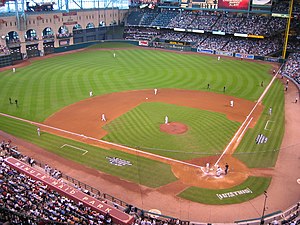
Minute Maid Park, with Tal's Hill in deep center

PNC Park's Roberto Clemente Bridge

"The Gap" at Great American Ballpark
- Fenway Park (Boston Red Sox) - Fenway is quite possibly the most notoriously quirky ballpark. The aforementioned 37-foot Green Monster in left field, which includes a field-level manually-operated scoreboard and a ladder, leads to unpredictable ricochets. So do the oddly-angled fences in center and right field. While the Monster in left dominates the park, Fenway's right field is also notable. Known as "the belly", right field is 380 at its deepest point, a large divergence from the short left field. The curve of the fence comes in as it nears "Pesky's Pole", named for former Red Sox player Johnny Pesky, and the distance from home plate to the foul pole is only 302 feet.
- Wrigley Field (Chicago Cubs) - Wrigley is the only ballpark left in use that has a brick outfield fence. This fence is covered in Wrigley's trademark ivy. From time to time, a batted ball will become lodged in the vines, which is ruled a ground rule double. Because of there being streets close beyond the outfield fences, there was little room for seating or other structures, making the park very open in the outfield. This, coupled with the park's proximity to Lake Michigan, which affects the wind currents from day to day or even hour to hour, can change the dynamic of the park. When the wind is blowing in, the park becomes a pitcher's park, despite the cozy power alleys. When the wind is blowing out, however, it becomes a hitters park. The openness of the ballpark also allows residents of the buildings across the street to get an unobstructed view of the field. Some owners even have installed small sections of inclined seating on top of the buildings. Wrigley was the last major league park to install field lights, with the first night home game being played in 1988.
- Dodger Stadium (Los Angeles Dodgers) - The view beyond the outfield is dominated by hills, and on one of these hills sits large block letters that spell out "THINK BLUE" reminiscent of the Hollywood Sign. There is also a large pillar sticking out beyond home plate atop the upper level seats that bears the Dodgers logo. The setting sun reflects off those hills and can give the pitchers a distinct advantage, which the Dodgers have capitalized upon frequently. Dodger Stadium has become famous for the no-gimmick, nostalgic baseball atmosphere created by the aesthetic simplicity of the ballpark. The massive tiers consist of oddly colored seats (orange, yellow, teal and blue), and the right and left field seats consist of little-league-style bleachers. The slogan for the stadium is "Blue Heaven on Earth."
- Angel Stadium of Anaheim (Los Angeles Angels of Anaheim) - Beyond the left field fence is a rock outcropping with water running down the center of it. At the top is three rocks forming an "A". The roof over the dugouts continues, connecting the two to form a dugout-level seating. The parking lot contains a large "A" with a halo, which once held the stadium's scoreboard. There are also two giant red caps at the front gate.
- Oakland-Alameda County Coliseum (Oakland Athletics) - The Oakland Coliseum is dominated by a section of seating derisively known as "Mount Davis". In order to lure the Raiders football team from Los Angeles back to Oakland, seats needed to be added to satisfy owner Al Davis. Thus, the 6-floor seating area was added, blocking the view of the mountains beyond.
- Kauffman Stadium (Kansas City Royals) - Kauffman is best known for having a 322-foot fountain and waterfall display, known as the Water Spectacular, the largest privately-funded fountain in the world. The fountains are on display before and after the game and in-between innings, while the waterfalls are constantly flowing. The stadium is also noted for having the best hitter's background in the American League.
- Sun Life Stadium (Florida Marlins)- Designed for football with modifications to allow a baseball field. Left field is necessarily cozy, neutralized somewhat by a 33-foot-high fence across most, though not all, of left field. The fence is known as the "Teal Tower" and often knocks down potential home runs in the power alley.
- Rogers Centre (Toronto Blue Jays)- The first retractable roof over a baseball stadium rests here, and is a unique system, with the larger section folding into a smaller semicircle that looms over the field. Under this sits glassed-in seating and one of the world's largest Jumbotron screens. The CN Tower next door stands tall over the park. This stadium is the last of the "squared-circle" designs that were similar to the abandoned Qualcomm Stadium and the now-demolished Veterans Stadium.
- U.S. Cellular Field (Chicago White Sox) - The old Comiskey Park was well known for what was known as the "Exploding Scoreboard." This scoreboard was re-incarnated in the new park. Holding a huge video screen, the scoreboard features sound effects and fireworks that go off after wins and home runs and is topped by iconic spinning pinwheels.
- Oriole Park at Camden Yards (Baltimore Orioles) - Camden Yards is the park that began the retro ballpark craze (although the minor-league Coca-Cola Field in Buffalo, designed by the same firm, predates Camden Yards by four years). Its green seats, its brick and steel finish, and its irregular grandstand configuration all hearken back to the old days. Beyond the bleachers in right and right center is a wall of brick columns with black iron gates. Beyond that looms the large B&O warehouse, a very prominent feature of the park.
- Progressive Field (Cleveland Indians) - Cleveland has a 19-foot left field wall, known as "The Little Green Monster," complete with a digital scoreboard embedded in the wall, installed in 2004.
- Rangers Ballpark in Arlington (Texas Rangers) - The exterior is a solid one of brick and features stone longhorn steer heads. The stadium is completely closed in, with offices walling in the space beyond the outfield. This can create a swirling wind effect that gives some hits a bit of lift they would not get otherwise. Right-center field fence has an inward "jog", a feature of artificial quirkiness that several recent ballparks have included.
- Coors Field (Colorado Rockies) - While most stadiums' batter's eyes are dark colored walls or patches of grass, Coors Field takes the opportunity to feature a scene of Colorado nature. The area, which sits in front of a tall green wall, is a large rock outcropping with a few ponds and waterfalls, and a number of evergreen trees. Atop this "rockpile" is a standalone and very distant bleacher section. The higher altitude and lower air density of Denver also figure into the uniqueness of the ballpark.
- Turner Field (Atlanta Braves) - It started out as the stadium for the 1996 Olympics, and soon afterward was turned (as planned) into the new stadium for the Braves. The outline of the stands that once extended far beyond the outfield fences is expressed by a line of columns, the extra area forming the Grand Entry Plaza that welcomes many Braves fans.
- Tropicana Field (Tampa Bay Rays) - Tropicana Field is a field that has had its share of criticisms, the biggest having to do with its catwalks. Four catwalks encircle the dome's interior, with the two towards the infield being in play. A ball hit off of them can be caught for an out. The two towards the outfield are out of play and, when hit, are either a home run or a foul ball, depending on where it hits in relation to the foul poles.
- Chase Field (Arizona Diamondbacks) - Due to the hot Phoenix weather, Chase is fully air conditioned. It also has a pool in the outfield, which can be rented by spectators. The field itself is graced by a distinctive dirt strip between home plate and the pitching mound. Once uniformly common in early baseball parks, this strip is present in only two modern parks (Comerica Park being the other).
- Safeco Field (Seattle Mariners) - Safeco has a retractable roof. While most retractable roofs form a complete enclosure, Safeco's forms more of an umbrella. The roof is supported by large steel structures that run on tracks, and these structures are very open, barely obscuring the view to the outside. The stadium is shielded from the rain but is still very open.
- AT&T Park (San Francisco Giants) - An arm of San Francisco Bay is just outside of the right field fence. The area is called McCovey Cove (named for former Giants slugger Willie McCovey), and is often filled with boaters hoping to catch baseballs hit out of the park (a baseball will float in the water initially), just as fans used to empty the right field bleachers at Candlestick Park and gather on the flat ground when McCovey would come to bat. The right field line is rather close, and although the wall angles away sharply, a "jog" in right-center neutralizes that angle somewhat. Underneath this 24-foot high brick wall is an area where fans can watch (a maximum of three inning) the ballgame for free. There is a special scoreboard near the right field wall that counts how many fair balls have been hit into the bay during game play by the San Francisco Giants (called "Splash Hits"). Many of those have been hit by Barry Bonds, the left-handed slugger whose presence strongly influenced the design of the ballpark, as legend says Yankee Stadium's short porch was for Ruth. The grass field is one of a few ballparks to not have patterns mowed into it creating what the Giants called "an authentic old-time feel" to the ballpark. Beyond the center-field wall and below the batters-eye the groundkeepers have planted an avocado tree.
- Comerica Park (Detroit Tigers) - Two brick walls flank the batter's eye, the names of those important to the organization and the Tigers' retired numbers painted in white on them. Above the left field wall, Comerica has its own monument park filled with large statues to the Tiger greats. Over the left field stands, one can see Ford Field looming, which was built in the same project as the park. The scoreboard is topped by two large tigers, and, when a home run is hit, their eyes light up and the sound of a tiger growl is played over the speakers. Beyond the outfield is a great view of downtown Detroit, including the Wyland Whale mural, although this was covered with a Verizon ad during the 2006 postseason. The problem with this is that downtown is south of the stadium and therefore gives the majority of the spectators and the batter an eyeful of sunlight as the sun sets. The park started its life with an extremely deep left-center field, but the fences have since been changed. The field itself is graced by a distinctive dirt strip between home plate and the pitching mound. Once uniformly common in early baseball parks, this strip is present in only two modern parks (Chase Field being the other).
- Minute Maid Park (Houston Astros) - A train filled with giant oranges (a reference to the Juice Train) runs forward and back along the left outfield when home runs are hit. Center field features an uphill incline known as "Tal's Hill", much like old Crosley Field in Cincinnati and the former Duffy's Cliff at Fenway Park in Boston, although it was created as a decoration, as opposed to being required due to the grade of the land. It is the only park in major league baseball with a flagpole in play, another purely decorative feature borrowed from the old Tiger Stadium in Detroit. First baseman Richie Sexson, then of the Milwaukee Brewers, is the only player to have hit the flagpole during a game. Its cozy dimensions, especially in left field, have led to its being called the "Juice Box". The Astros have been competitive in the early years of the ballpark, and the stadium fans can be very noisy when the roof is closed.
- Miller Park (Milwaukee Brewers) - Like Safeco Field, Miller Park has a retractable roof. In the left field corner houses "Bernie's Dugout", the home of the Brewers mascot, Bernie Brewer. At the beginning of the game, after every Brewers home run, and if the Brewers win, fireworks go off and Bernie slides down his slide. He also hangs "K"s to signify strikeouts. In 2006, a picnic area was added in right field. The retractable roof is unique in that it folds and unfolds like a fan, from a single pivot point, rather than sliding in parallel sections as most do. The arc-shaped trusses needed to support this roof make the ballpark nearly twice as high as it would be without a roof, dominating its surroundings.
- PNC Park (Pittsburgh Pirates) - The park was built on the Allegheny River, and its low walls behind the outfield seats allow for a stunning view of the river and skyline of downtown Pittsburgh that rests on the other side. Located directly outside the park is the Roberto Clemente Bridge, named in honor of the Pirates' legend, which is closed to traffic during games and serves as a pedestrian bridge.
- Great American Ball Park (Cincinnati Reds) - Sitting on the Ohio River, the park has the same relationship to the water that AT&T and PNC have. Beyond the right-center fence sits two large steamboat smokestacks that belch smoke, flash lights, and shoot fireworks when the Reds hit a home run and win games. The most prominent feature is a large gap in the grandstand. As the outfield is towards the river, and away from downtown Cincinnati, there is a large gap in the grandstands that allow a view out to the city from the park and vice-versa. To one side of the gap, there are three seating levels, and on the other, there are two.
- Citizens Bank Park (Philadelphia Phillies) - Citizens Bank Park has a giant Liberty Bell that lights up and rings as it moves from side to side. Outfield fence has a "jog" similar to the Rangers Ballpark in Arlington, except it's in left-center.
- PETCO Park (San Diego Padres) - A challenging factor in the design of this stadium was the presence of a historic structure, the Western Metal Supply Company Building, on the proposed ballpark site. Instead of being demolished, the building was integrated into the stadium, with the team store on the first floor and the other floors converted to suites. In fact, its southeast corner serves as the left field foul pole.
- Busch Stadium (St. Louis Cardinals) - The stadium is very open, allowing a great view of St. Louis, including its iconic arch. The old manual scoreboards that showed the scores around the league, were installed up on the walls of the inside concourse, still in the same configuration they were in the day the Cardinals played their last game in the old stadium.
- Nationals Park (Washington Nationals) - The park, located on the Anacostia River, provides views of the river as well as the dome of the Capitol Building and Washington Monument. The seats in center field are lined along the rear with cherry trees.
- Citi Field (New York Mets) - Citi Field is the only ballpark in the majors that does not have yellow foul poles, as its poles are instead painted orange, a trait it shares with its predecessor, Shea Stadium. The exterior facade is reminiscent of Ebbets Field, and leads into the Jackie Robinson Rotunda, which honors the Brooklyn Dodgers' legend. The most famous quirk of Citi Field, a Mets tradition that has been present since 1982, is the home run apple. Now in straightaway center in the middle of the batter's eye, there is a concrete housing. When the Mets hit a home run, the giant apple, which has a Mets logo on the front that lights up, rises from its housing.
- Yankee Stadium (New York Yankees) - The batter's eye in center field is a sports bar with tinted windows. Under this bar is Monument Park, an outdoor museum dedicated to the history of the team, which includes plaques, the retired numbers, and the six eponymous monuments, plaques placed on slabs of marble. The exterior is designed to resemble the old Yankee Stadium, but is actually a shell, with an open "Great Hall" between the exterior and the structure of the actual stadium. An iconic feature of the old stadium is the arched frieze, which is now placed back to its original position as the fascia of the roof.
- Target Field (Minnesota Twins) - The ballpark features local limestone, Minnesota fir trees outside the outfield, heated viewing areas and a heated field. In center field, a modernized version of the original "Minnie and Paul Shaking Hands" logo has mechanical features when a Twins player hits a home run. The sign lights up with strobe lights surrounding the Minnesota state outline and Minne and Paul.
|
 |
| Every ballpark, from oldest to newest |
|
|
 |
| Pitch timer, shift restrictions among announced rule changes for '23 |
|
|
 |
| 2023 MLB Ballpark Rankings |
|
|
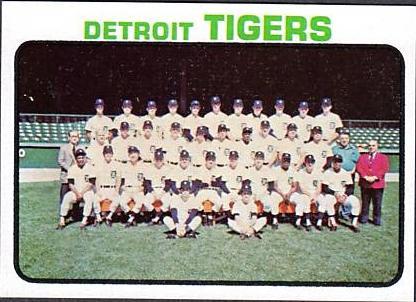 |
| 1973 Detroit Tigers |
|
|
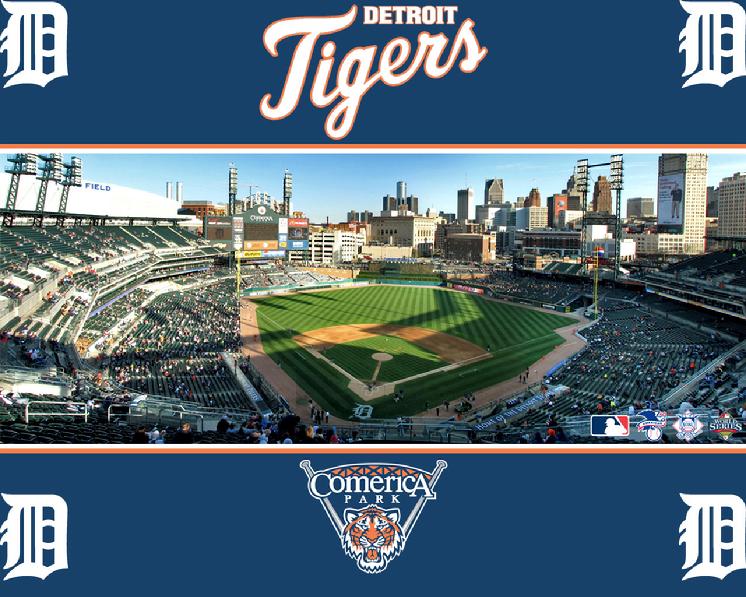 |
| Baseball Parks See Soon! |
|
|
Target Field: What To Know If You Go
With the team's home opener right around the corner, here’s everything you need to know if you plan to cheer on the Minnesota Twins in person this year. Click here for more Info.
|
Twins on '23 season: 'It's all about winning'
|
|
Here are 3 Twins storylines to watch this spring
|
This website contains, in various sections, portions of copyrighted material not specifically authorized by the copyright owner. This material is used for educational purposes only and presented to provide understanding or give information for issues concerning the public as a whole. In accordance with U.S. Copyright Law Title 17 U.S.C. Section 107, the material on this site is distributed without profit. More Information
Information presented based on medical, news, government, and/or other web based articles or documents does not represent any medical recommendation or legal advice from myself or West Saint Paul Antiques. For specific information and advice on any condition or issue, you must consult a professional health care provider or legal advisor for direction.
I and West Saint Paul Antiques can not be responsible for information others may post on an external website linked here ~ or for websites which link to West Saint Paul Antiques. I would ask, however, that should you see something which you question or which seems incorrect or inappropriate, that you notify me immediately at floyd@weststpaulantiques.com Also, I would very much appreciate being notified if you find links which do not work or other problems with the website itself. Thank You!
Please know that there is no copyright infringement intended with any part of this website ~ should you find something that belongs to you and proper credit has not been given (or if you simply wish for me to remove it),
just let me know and I will do so right away.
|
Website Terms and Condition of Use Agreement
also known as a 'terms of service agreement'
By using this website, West Saint Paul Antiques . Com, you are agreeing to use the site according to and in agreement with the above and following terms of use without limitation or qualification. If you do not agree, then you must refain from using the site.
The 'Terms of Use' govern your access to and use of this website and facebook pages associated with it. If you do not agree to all of the Terms of Use, do not access or use the website, or the facebook sites. By accessing or using any of them, you and any entity you are authorized to represent signify your agreement to be bound by the Terms of Use.
Said Terms of Use may be revised and/or updated at any time by posting of the changes on this page of the website. Your continued usage of the website, or the facebook site(s) after any changes to the Terms of Use will mean that you have accepted the changes. Also, any these sites themselves may be changed, supplemented, deleted, and/or updated at my sole discretion without notice; this establishes intellectual property rights by owner (myself).
It saddens me to include a Terms of Use for West Saint Paul Antiques . Com, but we all realize it is something that is necessary and must be done these days. By using the website, or facebook for West Saint Paul Antiques, you represent that you are of legal age and that you agree to be bound by the Terms of Use and any subsequent modifications. Your use of the West Saint Paul Antiques sites signify your electronic acceptance of the Terms of Use and constitute your signature to same as if you had actually signed an agreement embodying the terms.
|
|
 |
| Me with your feedback on how I can Improve this website. |
|
| |
|



















